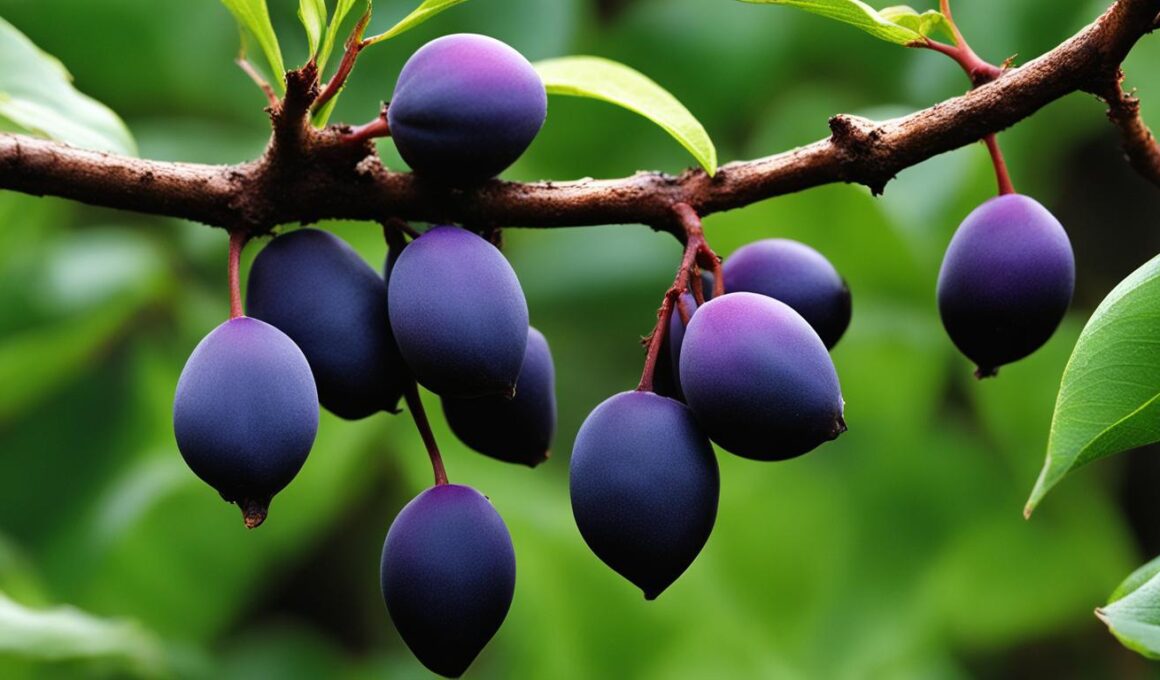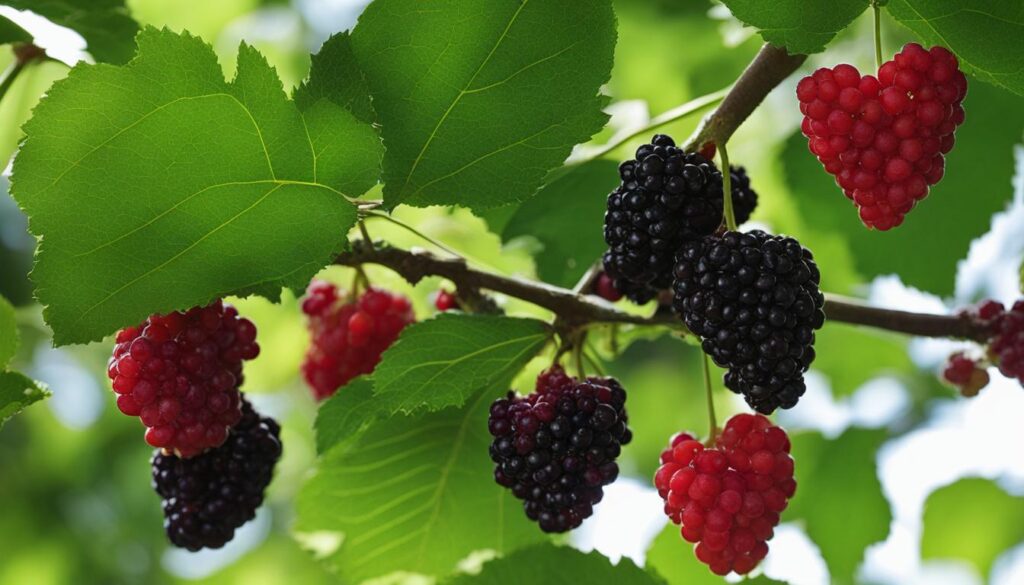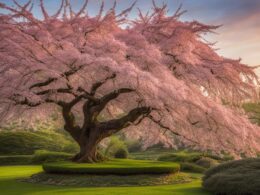If you’ve ever wondered what a mulberry looks like, you’re in the right place. Mulberries are deciduous trees that can be found in various locations such as stately homes, public parks, private gardens, and orchards. Although not native to Britain, these vibrant trees add a touch of beauty with their distinct shape, vibrant colors, and unique texture.
Black mulberry is the most common species found in Britain. These trees can reach heights of up to 12 meters and have a short trunk with long spreading branches. The orange-brown and gnarled bark adds character, while the coarse, heart-shaped leaves measuring around 8 cm long provide shade and charm.
When it comes to the fruit, mulberries resemble large blackberries or loganberries. They start off green and transition to pink and dark purple when fully ripe. Bursting with sweetness, tanginess, and juiciness, mulberries are a treat for your taste buds. However, be mindful as they can leave colorful stains on both your fingers and clothes.
Identifying Different Mulberry Species
When it comes to mulberries, there are multiple species to be aware of, each with its own unique characteristics. The three main mulberry species are the black mulberry, white mulberry, and red mulberry.
-
Black Mulberry:
The black mulberry is the most common species found in Britain. These trees have a medium size, with a short trunk and long spreading branches. The bark is orange-brown and often gnarled. The leaves are coarse and heart-shaped, measuring about 8 cm in length. The fruit of the black mulberry is large and turns black when ripe.
-
White Mulberry:
White mulberries are rare in Britain and are primarily grown for their leaves, which are used to feed silkworms. These trees have a slender, upright shape and large leaves with deep lobes. The fruit of the white mulberry starts off green and changes to white, pink, or dark red as it ripens.
-
Red Mulberry:
Red mulberries are predominantly found in the Eastern states of the USA. They have medium-sized trees with an open crown. The leaves of red mulberry trees do not have lobes and instead have toothed edges. The fruit of the red mulberry is a cluster of tiny fruits that begin green and mature to red or purple.
To help you better visualize these mulberry species, here is an image:
Having an understanding of these different mulberry species can be helpful when identifying and appreciating the diversity of mulberry trees. Whether you encounter a black mulberry, white mulberry, or red mulberry, each offers its own distinct beauty and allure.
Where to Find Mulberry Trees and How to Harvest Them
Mulberry trees can be discovered in various locations such as the grounds of stately homes, public parks, squares, private gardens, and orchards. In addition, they can be found in urban and suburban areas like roadsides, fence lines, old farmland, and woodland edges. It is not uncommon to stumble upon these trees in former orchard sites as well.
The mulberry trees bear fruit in June and July, and it is important to know when the berries are ripe for harvesting. Once the berries are fully ripe, they become easily detached from the branches and fall to the ground. This is the perfect time to collect the succulent and flavorful mulberries for various culinary endeavors.
When harvesting mulberries, it is essential to handle the berries with care as they are fragile and can easily get smashed. One method of gathering mulberries is to shake the branches or trunk, causing the ripe berries to gently tumble onto a tarp or cloth spread beneath the tree. This process ensures that the berries remain intact and ready for consumption or preservation.
Mulberries can be enjoyed in their natural raw state or used in delicious jams, jellies, and other culinary creations. They can also be preserved by freezing or drying, allowing their delectable flavors to be savored all year round. Furthermore, the leaves and shoots of mulberry trees can be eaten raw or lightly sautéed, offering additional culinary possibilities.
Given their abundance in various locations, mulberry trees present a valuable resource for foragers and nature enthusiasts. Whether you’re seeking to find mulberry trees, harvest ripe berries, or utilize their leaves and shoots, mulberry trees offer a delightful and versatile addition to your foraging adventures.
Are Green Beans and Mulberries Both Fruits?
Yes, both green beans and mulberries are classified as fruits. Green beans are legumes that develop from the flowering portion of the plant, while mulberries are a type of edible fruit that grows on a deciduous tree. Green bean season dates typically vary based on the specific climate and region.










